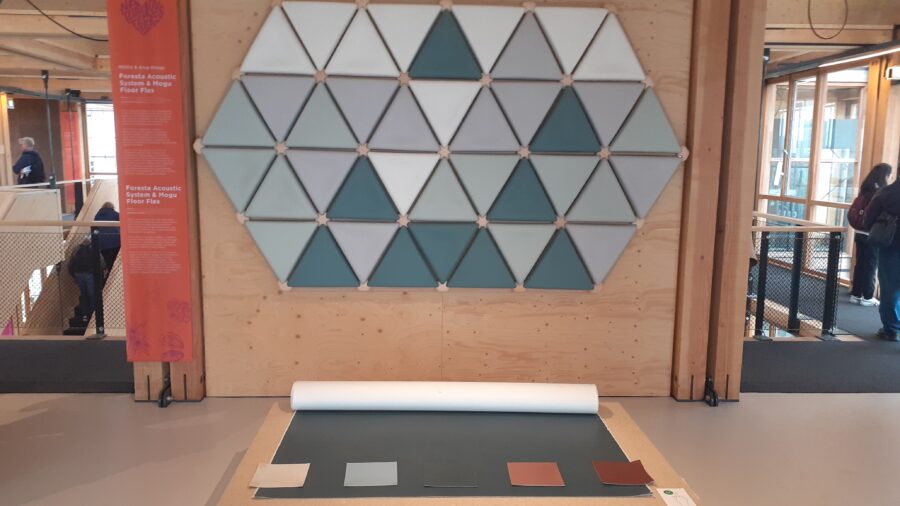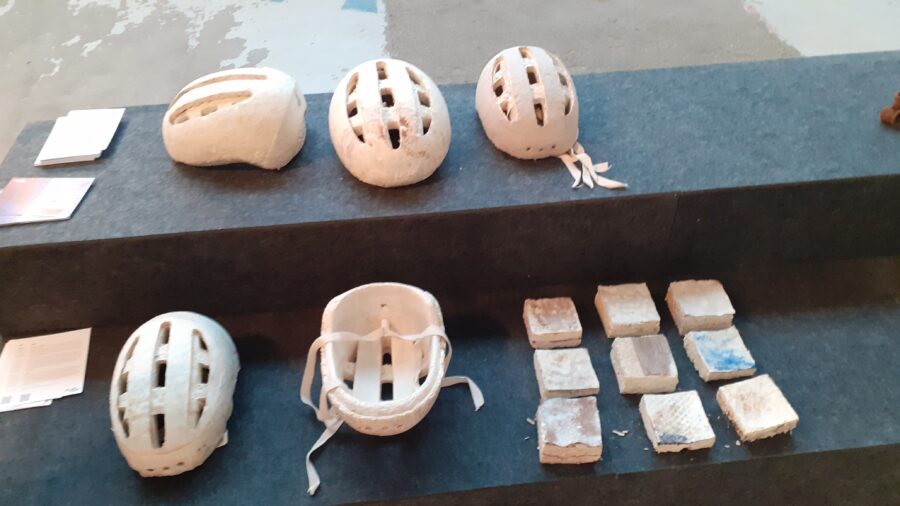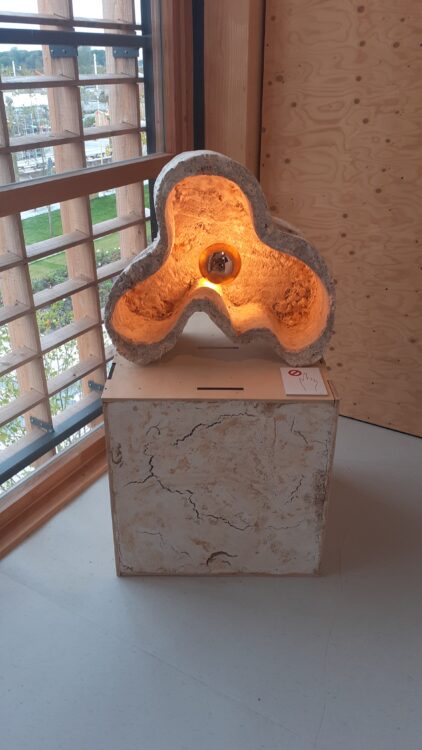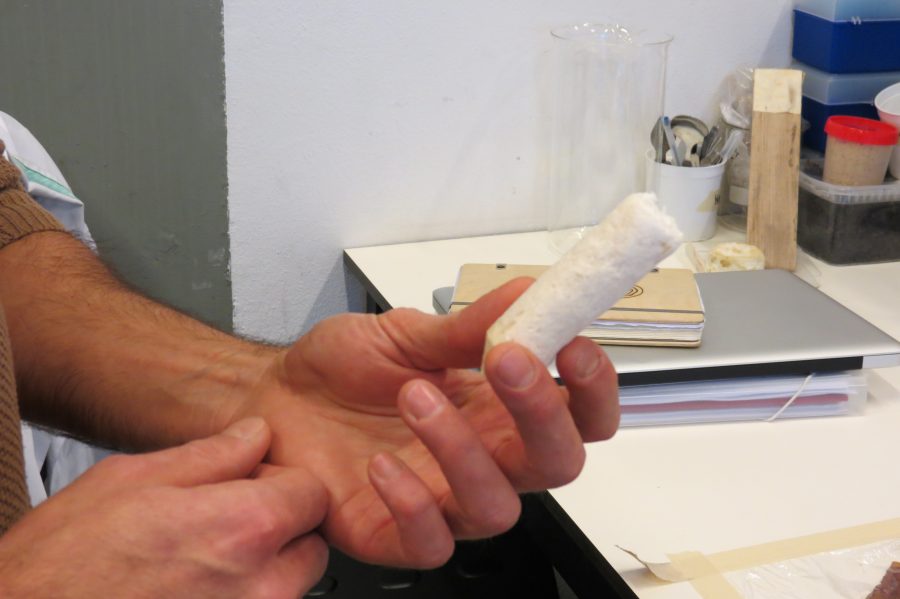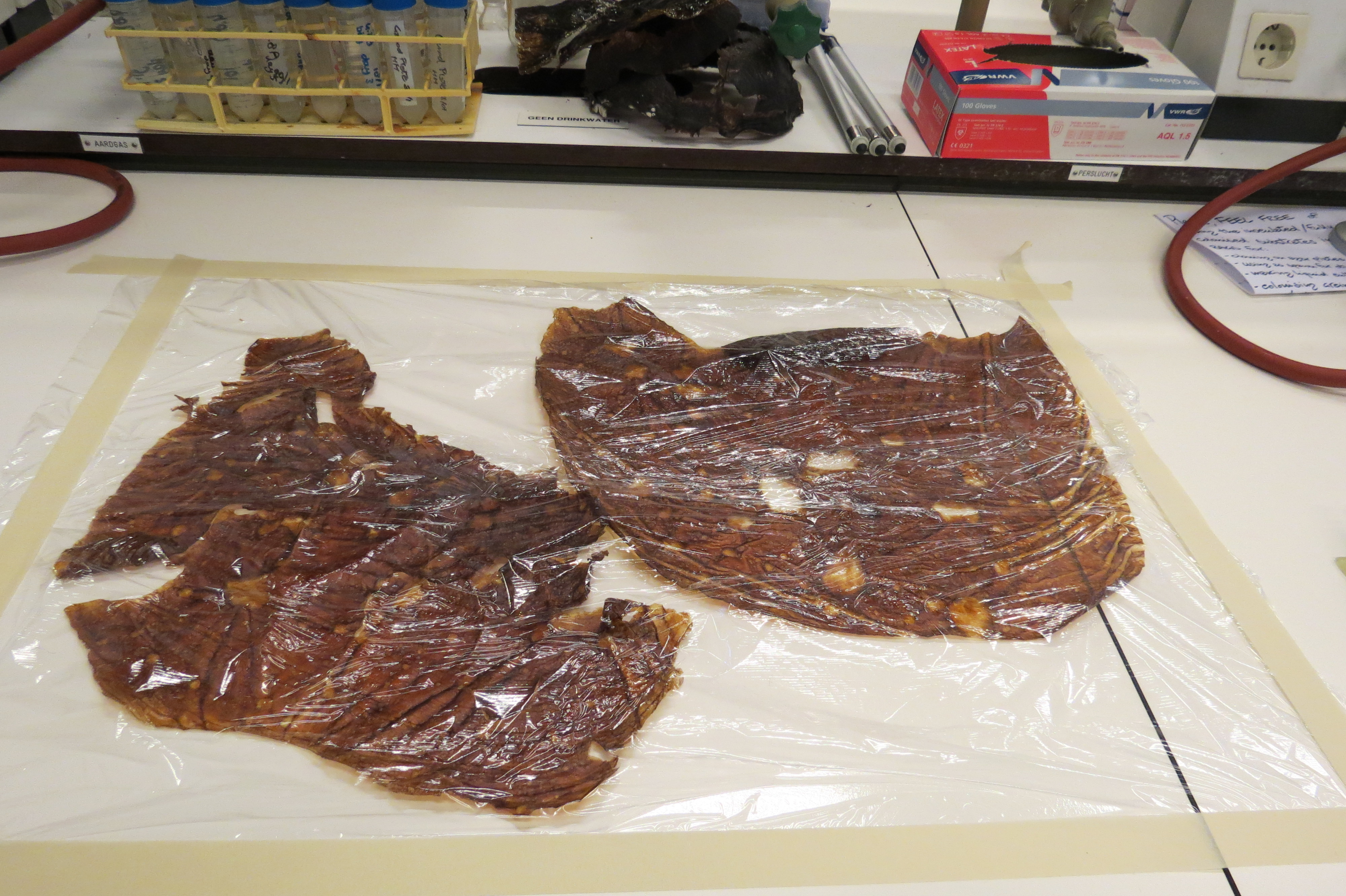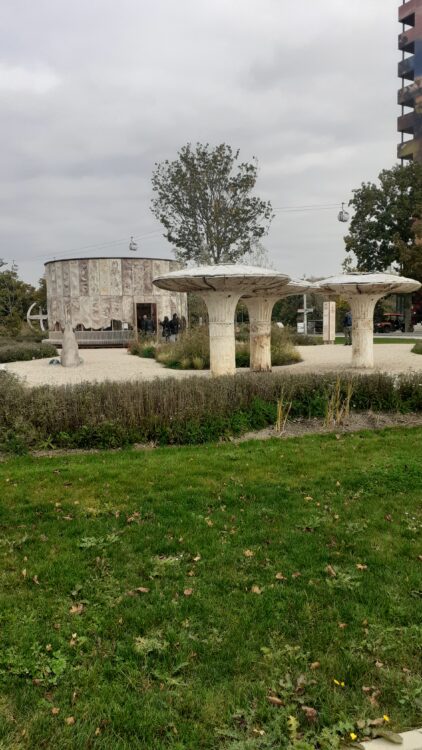
As regular readers might know, I have had an interest in fungus for several years. It all began when I came into contact with Maurizio Montalti and his works.
Montalti uses fungus to make artistic objects that demonstrate possible uses for this material form. He also uses this art to provoke conversation and discussion about how developments in the technology and processes used in his field allows us to replaces oil-based materials with natural ones.
In recent years the field has grown. Montalti and friends now have a production plant in Italy where they grow insulation materials. I say grow, and this is how this industry can be seen. Materials are grown into forms rather than shaped or cast.
Synthetic biology techniques allow the grower to adapt the material, which can then be finished and made into products. The example in the photo above tells the story, some shade from the sun and a circular garden house all panelled with fungus materials.
Take a look at the video linked above and this further discussion on the Bassetti Foundation website for lots more information.
Last month I attended the Floriade Expo and Dutch Design Week (both in the Netherlands) and came across a host of interesting growers and grown products. The environmental advantages of such approaches seem clear: objects can be grown, they are natural and so biodegradable. And also extremely versatile, as different densities and properties make for different uses.
But as pictures can paint a thousand words, I leave you with a gallery.
